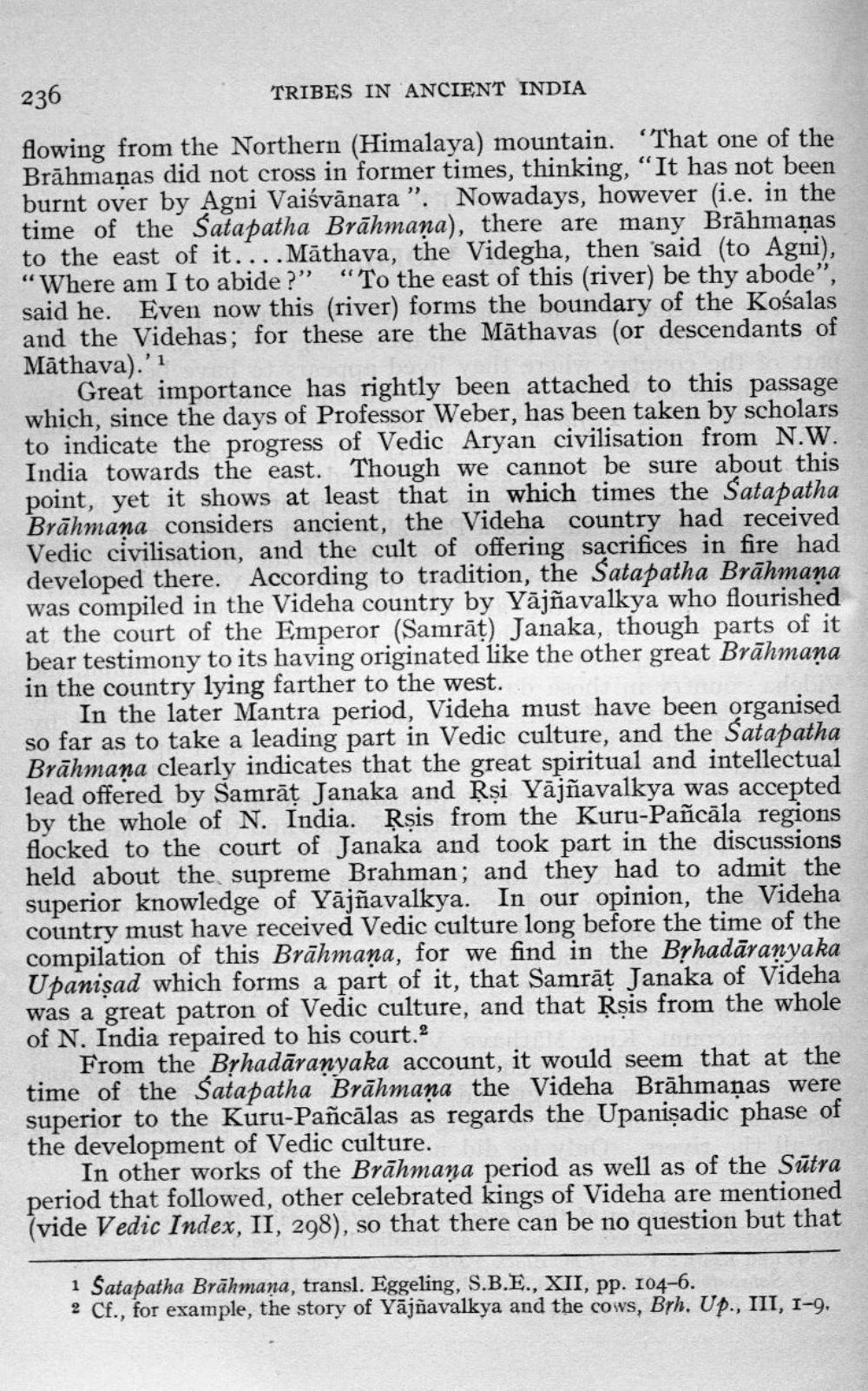________________
236
TRIBES IN ANCIENT INDIA
flowing from the Northern (Himalaya) mountain. “That one of the Brāhmaṇas did not cross in former times, thinking, “It has not been burnt over by Agni Vaiśvānara ”. Nowadays, however (i.e. in the time of the Satapatha Brāhmaṇa), there are many Brāhmaṇas to the east of it.... Māthava, the Videgha, then said (to Agni), "Where am I to abide?" "To the east of this (river) be thy abode”, said he. Even now this (river) forms the boundary of the Košalas and the Videhas; for these are the Māthavas (or descendants of Māthava).'1
Great importance has rightly been attached to this passage which, since the days of Professor Weber, has been taken by scholars to indicate the progress of Vedic Aryan civilisation from N.W. India towards the east. Though we cannot be sure about this point, yet it shows at least that in which times the Satapatha Brāhmana considers ancient, the Videha country had received Vedic civilisation, and the cult of offering sacrifices in fire had developed there. According to tradition, the Satapatha Brāhmana was compiled in the Videha country by Yājñavalkya who flourished at the court of the Emperor (Samrāt) Janaka, though parts of it bear testimony to its having originated like the other great Brāhmana in the country lying farther to the west..
In the later Mantra period, Videha must have been organised so far as to take a leading part in Vedic culture, and the Satapatha Brāhmaṇa clearly indicates that the great spiritual and intellectual lead offered by Samrāt Janaka and Rși Vājñavalkya was accepted by the whole of N. India. Rșis from the Kuru-Pañcāla regions flocked to the court of Janaka and took part in the discussions held about the supreme Brahman; and they had to admit the superior knowledge of Yājñavalkya. In our opinion, the Videha country must have received Vedic culture long before the time of the compilation of this Brāhmaṇa, for we find in the Byhadāranyaka Upanişad which forms a part of it, that Samrāt Janaka of Videha was a great patron of Vedic culture, and that Rşis from the whole of N. India repaired to his court.2
From the Brhadāranyaka account, it would seem that at the time of the Satapatha Brāhmana the Videha Brāhmaṇas were superior to the Kuru-Pañcālas as regards the Upanişadic phase of the development of Vedic culture.
In other works of the Brāhmana period as well as of the Sūtra period that followed, other celebrated kings of Videha are mentioned (vide Vedic Index, II, 298), so that there can be no question but that
i Satapatha Brāhmana, transl. Eggeling, S.B.E., XII, pp. 104-6. 2 Cf., for example, the story of Yājñavalkya and the cows, Brh. Up., III, 1-9,




